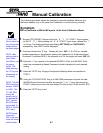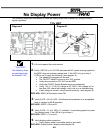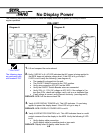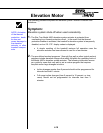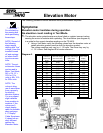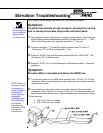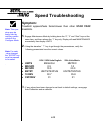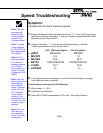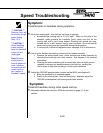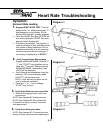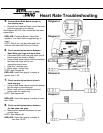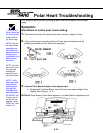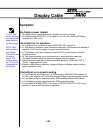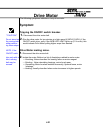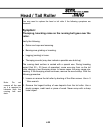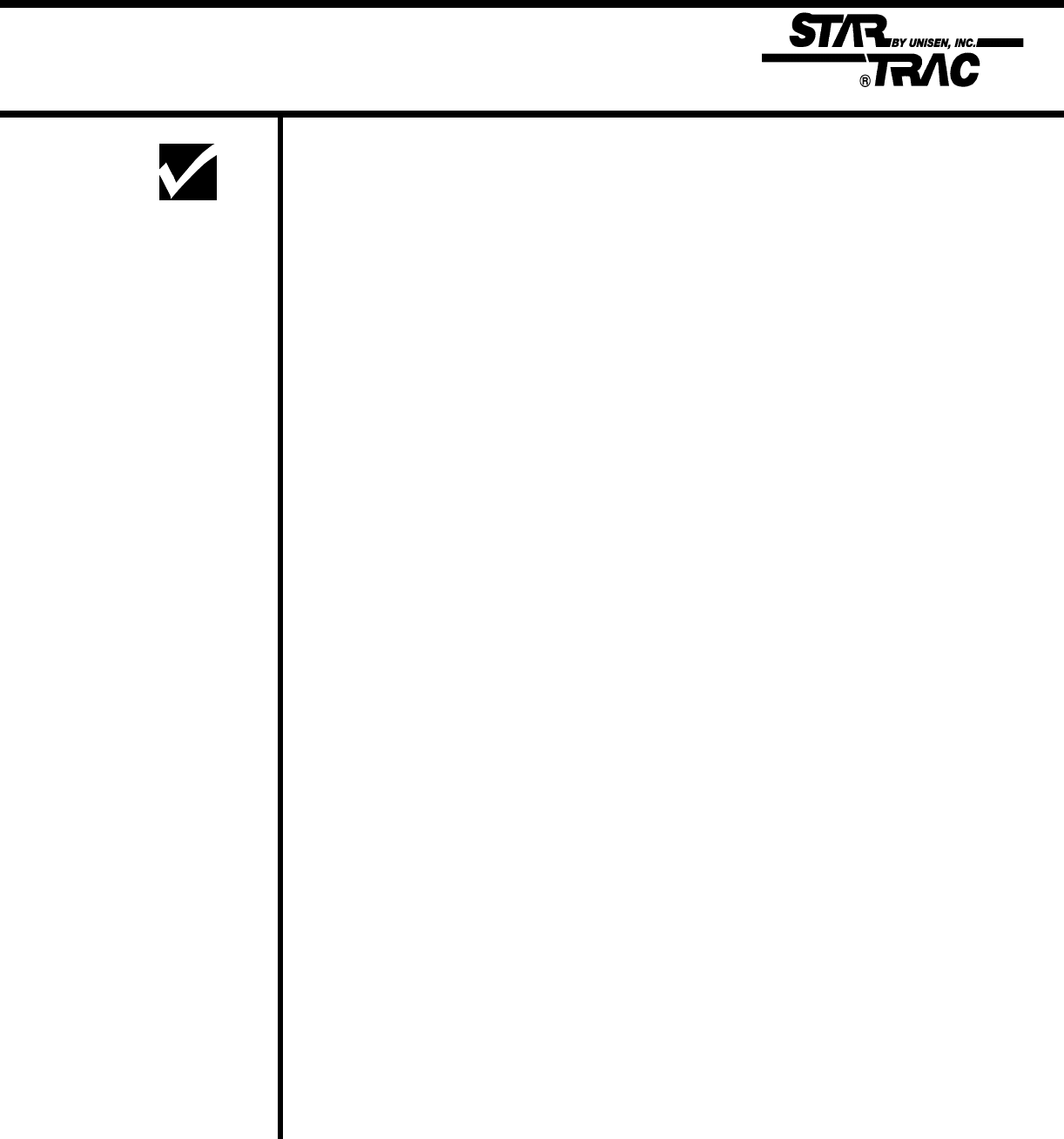
Speed Troubleshooting
** CAUTION **
Running belt will
be moving at high
speed during
Step 1 & 3.
** CAUTION **
When checking
motor brushes
have the treadmill
turned off and
unplugged.
Note: Brushes
should show a
smooth pattern of
wear, cracks or
unusual wear will
cause motor to
jerk, replace if
brushes if neded.
Symptom:
Treadmill jerks or hesitates during operation.
1. Verify the running belt / drive belt are not loose or slipping.
• Accelerate the running belt to 3.0 (5.0 kph). Stand on the side of the
treadmill, while grasping the handrails firmly, place one foot on the
running belt with a very sharp impact. Running belt should not stop,
instead slip for a split second forcing your foot back. Drive belt should
never stop rotating over the headroller during this procedure.
• If running belt or drive belt appears loose, see page 4.26 in this section.
2. Verify motor brushes are making contact and are seated correctly.
• Remove the motor brush cover, check brushes are seated correctly by
removing the brush clip and verify contact. See diagram A for removal
instructions.
• Cleaning the motor armature with a commutator stone is highly recom-
mended to remove any possible carbon dust build up, causing the
the brushes to skip over resulting in a brief motor hesitation.
3. Adjust the IRCOMP potentiometer, located on the MCB, see diagram B.
• Bring the treadmill to its minimum speed.
• Stand on the running belt, if the belt feels jerky / hesitates adjust the
IRCOMP potentiometer until running belts feels smooth.
Symptom:
Treadmill hesitates during initial speed start-up.
1. Manually calibrate the minimum PWM as described in page 4.7 in this
section.
4.15



